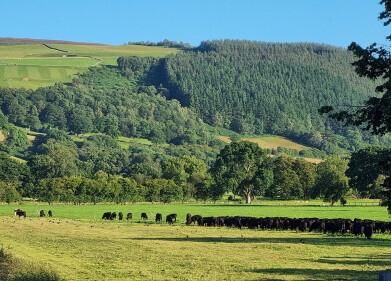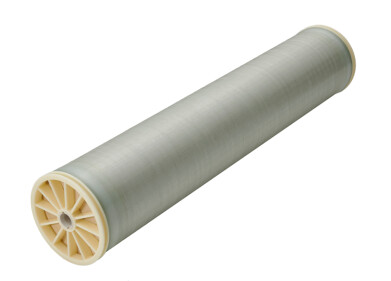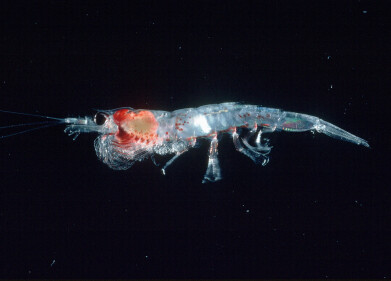Water/Wastewater
Optimised Membrane Filtration and New Ideas for Sludge
Feb 25 2016
Economic necessities and new legal regulations are dictating the course in the international water and sewage industry. IFAT shows how the environmental technology sector is reacting to the latest challenges. The world's leading trade fair for water, sewage, waste and raw materials management will take place in Munich from May 30 until June 3, 2016. An initial insight into the expected innovations is given below.
Stricter sewage guidelines, rapid population growth and bottlenecks in the water supply mean that the market for membrane bioreactors (MBR) is growing more and more quickly. The membrane growth procedure allowing water to be reused is gaining in importance, particularly in urban areas. For years now, the VRM rotating membrane filtration system from the mechanical engineering company Huber has been used successfully in municipal and industrial MBR processes. In close partnership with the Wiesbaden-based membrane and module manufacturer Microdyn-Nadir, the system has now undergone a fundamental redesign. The objective was to combine the benefits of the rotating membrane system with those of the tried-and-tested Bio-Cel module technology. High throughputs of up to 250 m³/h and above all energy-efficient, highly effective membrane cleaning with less than 150 l/m²h of flushing air are among the key benefits. As indicated by the manufacturer's data, the Bio-Cel modules also offer a long operating life, can be cleaned at low cost and, as ultrafiltration membranes, ensure a very good drainage quality. According to Huber, this means not only high-performance, reliable system operation but also very low specific investment, operating and energy costs for the customer. Huber will install the new membrane filtration system in full size as one of the highlights at its IFAT stand.
inge's multibore membrane is another well-established product. In the field of water treatment, the very small-pored filters reliably trap not only particles but also microorganisms such as bacteria or viruses. Together with specialist colleagues from BASF, the company's development team has improved the membrane material and, according to its own information, can now accommodate much more membrane area in the ultrafiltration modules. This makes them even more efficient, as a result of which fewer modules are required for a water treatment system. As a further innovation, inge will also present ultrafiltration modules for horizontal applications at IFAT – a solution which is aimed in particular at the replacement and improvement of existing systems.
For the world's leading trade fair in Munich, Siemens has announced innovations in the fields of automation and drive systems, industrial software and services. These solutions will enable companies and municipal authorities to minimize their use of resources and energy when treating water and sewage and will help to maximize supply security. Among other things, the "ICeWater" research project where the operation of pumps is optimized by analyzing consumption data will show the opportunities offered by digitalization.
When it comes to agricultural treatments, only polymers where the sludge and the individual constituents will have decomposed by at least 20 percent within two years will be permitted for use in sludge treatment in Germany from 2017. According to the mechanical engineering company Flottweg that specializes in solid-liquid separation, synthetic, polymeric flocculants currently do not satisfy these requirements. Starch-based polymers could be an alternative. Flottweg will announce at IFAT that its OSE decanter achieves very good results when thickening sludge even with starch polymers. In the decanter, the excess sludge is thickened to a defined, adjustable concentration using centrifugal force. According to Flottweg, the starch-based flocculant is only needed to "polish up" the centrate in order to achieve a separation efficiency of over 95 percent. Generally speaking, less than one kilogram of polymer is needed per ton of dry substance.
Pyreg too is working on a contemporary solution for handling sludge and other biomass residues. At IFAT, the company will celebrate the successful commissioning of its first reference system in this area. Since September 2015, a Pyreg module at the Linz-Unkel treatment facility has been fully converting dried sludge into a phosphorus fertilizer. According to information from the company, the individual process steps – compact fouling, drying and the thermal treatment using the Pyreg procedure – are so intelligently linked that the resulting waste heat can be reused in a variety of ways. Per year, over €200,000 of energy and operating costs could be saved.
This year, Veolia Germany's trade fair stand will focus on its industrial customers. The waste disposal company will present itself as an environmental services provider that is able to offer solutions for water, waste disposal and energy from a single source. According to Veolia, companies from sectors such as automotive engineering, health care and the food industry will benefit above all from the integrated view of resource flows – across all areas and in particular at their interfaces. When it comes to water, one key objective will be to offer municipal authorities and companies future-proof solutions for handling sludge – against a backdrop of changing basic conditions. This will include a strategy for phosphorus recycling which will be compulsory in the future.
Events
Carrefour des Gestions Locales de L'eau
Jan 22 2025 Rennes, France
Jan 29 2025 Tokyo, Japan
Feb 05 2025 Nantes, France
Feb 16 2025 Kampala, Uganda
Feb 26 2025 Chennai, India




-as-feedstock.jpg)





